With technology rapidly changing and becoming better every year, many people are asking the age-old question “which camera is better?” You now have an array of options including DSLR Cameras, Mirrorless Cameras, Phone Cameras and Point and Shoot Cameras.
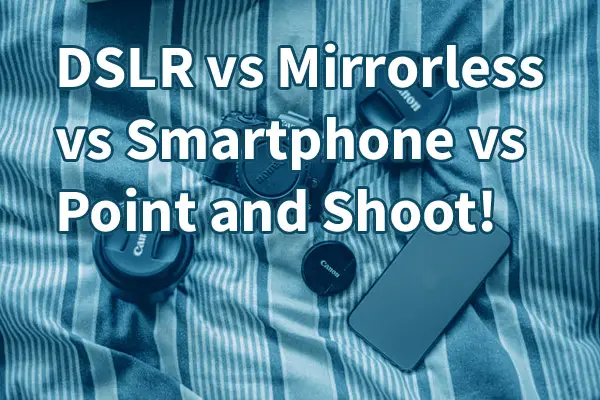
Having so many options can become overwhelming and make you wonder, where should I invest my money?
But the truth is that most people see a picture and either fall in love with it or don’t. They want to learn more or feel nothing. A single image could bring one person to tears and leave another walking away.
Most people who look at or judge a photo are not asking about what gear was used to take it. They are reacting to its composition which includes a variety of other factors including the rule of thirds, leading lines, and much more. Only people who shoot photos as a job or passionate hobby care about the gear. So when it comes to choosing the right equipment to take a photo, it’s based on you, not the equipment itself.
But if you ARE thinking about investing in a camera and are more concerned about the tech side, then this article is for you. We have broken down some of the main differences between each of these cameras.
After seeing the breakdown you will be better educated to decide where to put your wallet. But remember at the end of the day you are the one who makes the beautiful photos, your eye. Most photographers will argue that your imagination comes before the gear.
Let’s dive in!
Before we start comparing gear, it’s important to know what each camera is and what characteristics it has.
Smartphone Cameras
The smartphones we know and love today were pretty much born in 2007 when Apple Introduced the iconic iPhone! I still remember my friend breaking out the first iPhone I had ever laid eyes on and watching in amazement as he used the touchscreen as no buttons were needed.
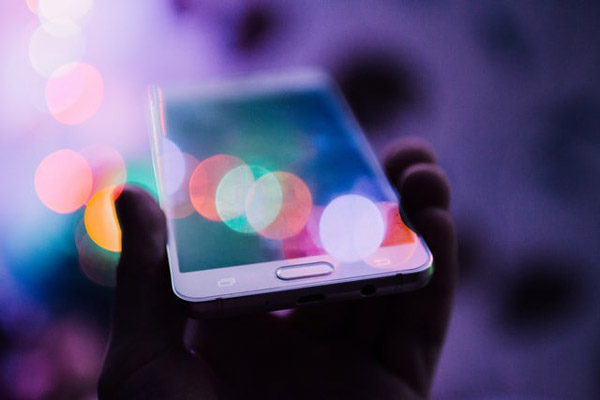
The cameras that were first included on smartphones were not so impressive. But today they perform at incredible rates and even offer multiple lenses, filters, built-in apps for editing, and much more! It’s not a wonder many photographers will pull out their smartphone instead of a big clunky DSLR when they are shooting certain photos.
Even more importantly, typically we carry our smartphones with us everywhere! So if you suddenly see a fascinating scene in front of you like that sunset while sitting in rush hour traffic you have a camera ready to go and with pretty good quality to shoot it. Don’t forget about the networking and inspiration that comes along with apps like Instagram and Tik-Tok.
Smartphones have become the most popular camera for the general public in terms of how often they are used to take photos. Just think about all the photos you take with your smartphone vs a DSLR.
DSLR Cameras
The old faithful DSLR. The single-lens reflex camera was born in the mid-1900s and was the choice for most professionals. Photography was born in Paris and for centuries after many artists such as painters found a new medium for their work.
DSLRs are built to last and withstand the toll that most professional photographers take on them, including travel, harsh weather conditions, and being banged around in a camera bag.
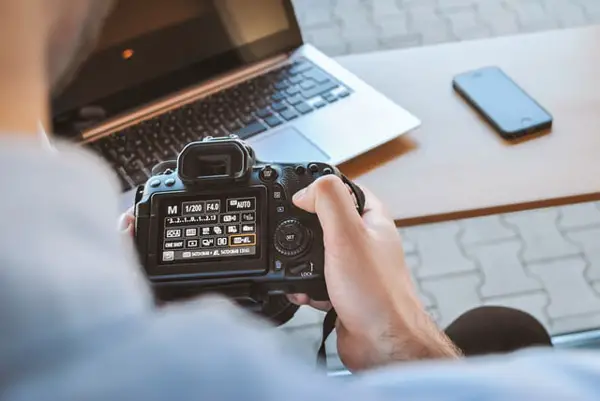
Photographers love how when they look inside their viewfinder, what they see is typically what they will get in a photo. One-click of a button gives you a moment imprinted on their sensor. DSLR cameras are great for giving artists control, focus, high-speed and accuracy.
This is what the pros have been using for decades. Lastly, professional photographers love the array of lens choices that work for everything depending on the genre including portraits, landscape, sports, and product photography.
Mirrorless Cameras
Mirrorless cameras are relatively new to the world of photography. Typically with old DSLR cameras, light would pass through your lens onto the mirror so you could see the image in your viewfinder before pushing the shutter button causing the mirror to flip down and penetrate your camera’s sensor.
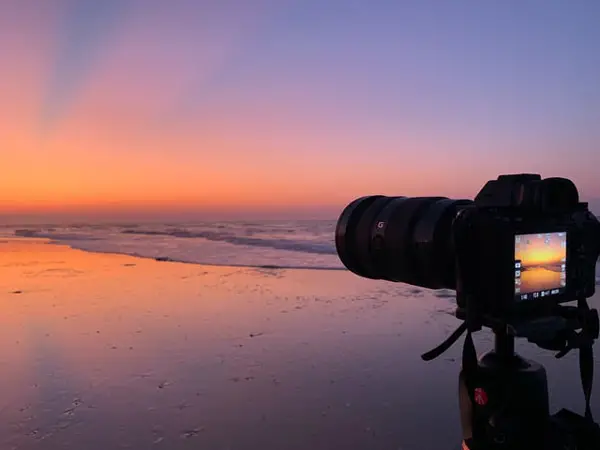
What is different about mirrorless cameras is that they no longer have that little mirror inside. Instead, you have an LCD screen on the back of the camera that shows you the image you are about to take. Some perks to this include a silent camera and an easier camera to fix without the tricky mini mirror inside.
The mirror was the part of the camera most likely to break after so many clicks. Whenever buying a used camera you would first look at the number of clicks it had taken in its lifetime.
Point and Shoot Cameras
This is probably the type of camera you started with, unless you are old school and began with film photography, which then likely led you into buying a DSLR. Point and shoot cameras are small, light and easy to stick anywhere.
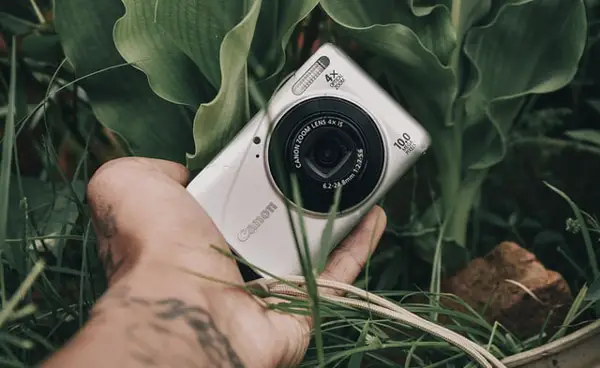
Point and shoot cameras have in part been replaced by phone cameras, due to their similar size and portability, yet limited use to “only photography”. At this point they dont offer much over a phone camera since they have no removable lens or options for attachments. Sure they can come with face detection or a gps but so does your phone camera.
The fact is that a point and shoot will be cheaper and easier to maintain than a DSLR. However, as many people have found out, they have their own issues, such as permanent lenses (which sometimes have that pesky lens cap mechanism that breaks ruining the entire camera), uncomfortable tiny controls placed in the wrong spot, strange ergonomics, and all sorts of strange battery types.
On the technical side, due to their construction, they have a deep depth of field, which is often not what you are looking for as a photographer. They also have small image sensors because it needs to fit in a small body, therefore image quality is reduced. They are not made for fast capture of images, which is essential for sports and action photography.
Let’s address a couple common questions people ask.
Is a Mirrorless Camera Better than a DSLR?
So you may be asking yourself now, is a mirrorless camera better than a DSLR? Well, that depends on you. Mirrorless cameras are great for weddings and shooting events because as stated above they no longer have a mirror inside making that loud click noise as you push the shutter button.
They are also much more lightweight and smaller to carry around than the DSLR. Also, as stated above, if they break, they are much easier to fix because there are less moving parts. They are also great for shooting HD video at a lower price.
But on the other hand, the trusted DSLR wins for its battery life. The problem with mirrorless cameras is that the LCD screen must be constantly lit up which can quickly drain the battery life. Also, some photographers prefer looking through a viewfinder to focus on the scene.
Even more, if you are someone who is rough on cameras you might want to think twice about investing in a more delicate mirrorless camera. Lastly, if you buy a mirrorless camera that means investing in all new equipment, as lenses are not interchangeable between mirrorless and DSLR cameras.
It would be a whole makeover to your gear. With that being said, DSLR cameras also have more lens possibilities at the moment. That is changing yearly but currently, DSLR is the winner when it comes to a broad range of accessories and lenses.
Can a Smartphone Camera Replace a DSLR?
The short answer to this question is no. However, as we keep saying, that depends on you. It depends on how much control you want or need on the camera, if you shoot manual, what you are shooting, and what lighting conditions you are working with. The great thing about DSLR cameras is they give the shooter more control over their camera settings.
Typically, you are smarter than the camera which can’t tell that you are inside shooting your living wall because there is a window letting in bright light and fooling it into thinking you’re outdoors.
With a DSLR camera, you can adjust your aperture for better bokeh, your shutter to freeze motion, and your ISO to let in more light, as well as add an arrangement of flashes and lenses to your DSLR to change how you shoot completely and what results you get once more.
This mostly pertains to the extreme hobbyist or the pros. Lastly, if shooting the night sky is a passion for you, you may want to consider a DSLR because smartphones are not advanced enough yet to shoot stars and other dark situations.
However, if you are just someone who loves taking photos/snapshots and don’t know how to shoot in manual or want to invest in a lot of gear, a smartphone could be perfect. The newer iPhones are great because they even give you the option to add bokeh (blurred backgrounds) to your images.
Also, you can tap your screen and bring your brightness up or down. And those are just the tip of the smartphone iceberg because there are so many apps that allow you to add much more and change your images on your phone.
So, we don’t believe that smartphones are currently replacing DSLR cameras but they are making cameras and photography more accessible for everyone on the planet.
Are Mirrorless Cameras Better than Phone Cameras?
Mirrorless cameras are in a lot of ways better than phone cameras because just like a DSLR they give you more control over your camera. But like smartphones, they are lightweight and easier to take with you everywhere.
Mirrorless cameras also give you more lens options (removable lenses), a bigger screen to see what you are taking, and more variations for shooting different niches. So if you are trying to choose between a mirrorless camera or a phone camera, which are about the same price these days, we recommend going with a mirrorless camera.
Are Mobile Phone Cameras Better than DSLR?
Mobile phone cameras are better than DSLR cameras when size matters most, when you are not worried about shooting in manual mode, when you are not looking for the image quality and focal length a specific lens gives you, and when you are not doing the type of shooting that phone cameras cannot handle. As we talked about above, when shooting with a mobile phone camera you are losing a lot of control over what you can do with your camera.

Also, it depends on which mobile phone camera you invest in. Androids and Apple have a lot of similarities but also differences when it comes to built-in cameras. But if you are someone who just wants to have the ease of a camera readily available and learn more about composition before investing in a heavy DSLR with lots of lenses, start with a mobile phone.
Do Professional Photographers use Point and Shoot Cameras?
Professional photographers do use point and shoot cameras. They even use them for video shoots. They like using them for candid shots or when light is good since ISO can be an issue. Photographers seem to prefer carrying point and shoots over phone cameras. Maybe this is because there is still that part in every photographer that says “carry your camera all the time” and carrying a phone is just not the same.
Mirrorless vs DSLR for Beginners
There is not much of a difference when it comes to learning how to shoot on a mirrorless camera vs a DSLR for beginners. As we talked about in our opening paragraph it’s most important for beginners to master composition before investing heavily in equipment.
Beginners should explore what things they like to shoot and how often. Think about some of the differences in equipment for shooting portraits vs shooting landscapes. Think about what lighting you may want to add to your gear bag in each case.
But generally, if you are a beginner and want to continue to just have fun with shooting as a hobby, a mirrorless camera may be a better option because you see your image exactly as it will be shot on the back of the camera. DSLR shooters miss out on this helpful difference. When you use a DSLR you simply see your view inside the camera and your light meter. But you do not see what the image will look like after unless you have a DSLR with live view mode on the back LCD.
So for beginner shooters, it’s very helpful to see how the image changes on the back of a mirrorless camera’s LCD screen as they adjust their aperture or shutter speed. You will have instant feedback and in turn, it may help a beginner to gain a better understanding of the exposure triangle.
Here is a video on the subject by Sony:
Conclusion
So there you have it! Some of the main differences between smartphone, mirrorless, and DSLR cameras. Now it’s your turn to go out and practice with each and decide what works best for you. We recommend borrowing a friend’s or renting from a camera store to test out each camera and see how you like the feel and shooting methods of each before buying your new baby!

Keep in mind, you do not need to stick to just one. You can have one camera for those serious excursions into the wild, and another handy one for everyday occasions to shoot photos quickly and without a bag full of accessories.
Click the following link to learn what are the best phones for photographers.









5 comments